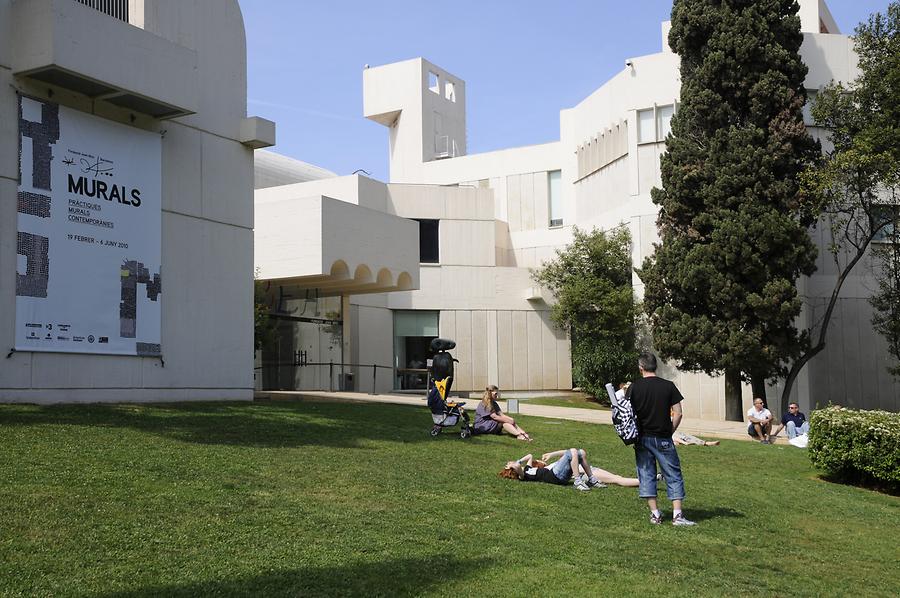Fundació Joan Miró#

Fundació Joan Miró, April 2010, © Gerhard Huber, under CC BY-NC 4.0 +Edu
Not far from the Olympic area, the Joan Miró Foundation has been adding a highlight to Barcelona's museums since 1971. Created by the artist himself, the exhibition shows more than 200 of his paintings and sculptures. Miró was born in Barcelona in 1893, where he attended the Academy of Art, before moving to Paris at the age of 27 to meet such great minds as Picasso, Hemingway and Joyce. Miró became one of the most important representatives of Surrealism. The aim of this new art movement was to explore the unreal and phantasmagoric as well as the depths of the unconscious mind and to broaden the scope of experience limited by human logic by the fantastic and the absurd. For this purpose, Miró developed a very own, colourful and abstract design vocabulary, taken directly from dreams and the arbitrary play of thoughts. How he came by all the ideas for his pictures, he describes as follows: 'Well, I came back to my studio late at night and went to bed, sometimes without having dinner. I saw things, I put them down in my notebook. I saw apparitions on the ceiling.' And he must have seen many of those apparitions because his work includes more than 11,000 objects, including 500 sculptures, 2,000 oil paintings and 5,000 collages.
Unweit des Olympiageländes macht die Joan Miro-Stiftung seit 1971 Barcelonas Museenlandschaft um einen Höhepunkt reicher. Vom Künstler selbst ins Leben gerufen, zeigt die Ausstellung mehr als 200 seiner Gemälde und Skulpturen. Geboren wurde Miro 1893 in Barcelona, wo er die Kunstakademie besuchte, bevor er im Alter von 27 Jahren nach Paris zog, um Geistesgrößen wie Picasso, Hemingway und Joyce zu treffen. Miro wurde zu einem der wichtigsten Vertreter des Surrealismus. Ziel dieser neuen Kunstrichtung war es, das Unwirkliche und Traumhafte sowie die Tiefen des Unbewussten auszuloten und den durch die menschliche Logik begrenzten Erfahrungsbereich durch das Phantastische und Absurde zu erweitern. Miro entwickelte dazu eine ganz eigene, farbenfrohe und abstrakte Formensprache, direkt den Träumen und dem willkürlichen Spiel der Gedanken entnommen. Wie er zu all den Ideen für seine Bilder kam, beschreibt er selbst: 'Nun, ich kam spät nachts in mein Atelier zurück und ging zu Bett, manchmal ohne etwas zu Abend gegessen zu haben. Ich sah Dinge, ich hielt sie in meinem Notizbuch fest. Ich sah Erscheinungen an der Decke.' Und er muß wahrlich viele Erscheinungen gesehen haben, denn sein Werk umfasst über 11.000 Objekte, darunter 500 Skulpturen, 2000 Ölgemälde und 5000 Collagen.